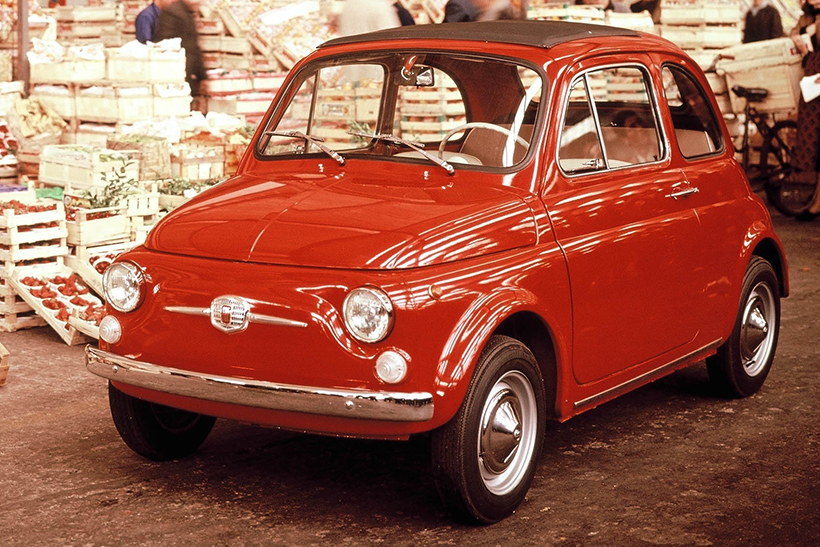City cars are big sellers in 2017, but what about their classic equivalents? Paul Guinness looks at a selection of diminutive urban runabouts – each one offering impressive economy, manoeuvrability and free-of-charge Vehicle Excise Duty. Which one would you choose?

FIAT 500
When Fiat’s ‘Nuova’ 500 was launched in Italy in 1957, it was hardly the last word in power and speed thanks to its 479cc (later upgraded to 499cc) two-cylinder air-cooled motor initially producing a meagre 13bhp. This Italian bambino thrived on high revs and hard work, however, and felt nippy around town, while its sharp steering and tiny turning circle made it ideal for the busy streets of Rome or Milan. Fast-forward six decades (yes, the humble 500 celebrated its 60th anniversary earlier this year) and the same is very much true.
During a production run lasting well into the ’70s, the Fiat 500 received various upgrades and minor power increases, but at no time was it in danger of losing its character, its charm or its utilitarian appeal. This was a basic machine in the extreme, and yet it’s now seen as one of the chicest modes of urban transport in the world.
It didn’t take long for the new 500 to come to the attention of fans of modified cars, with the official Abarth conversions of the 1960s being the ultimate examples. And these days a big proportion of classic 500s have been treated to the simplest form of extra power, which is to fit the 652cc engine and transmission from an air-cooled Fiat 126 – a relatively straightforward conversion.
The problem with the 500 having such a following is that values have soared over the last few years, with fully restored examples often advertised at £9000-10,000, although MoT’d cars in solid condition can be picked up for less. In terms of ‘bang for your buck’, that’s a lot of money; and yet even a fully restored 500 costs less than a brand new entry-level model from the latest 500 range. Throw into the equation the fact that the classic equivalent won’t lose half its value over the next three years, and you have a strong argument for using a well-prepared ‘real’ 500 for your city needs. It might not be the quickest classic out on the open road, but you can’t beat an original 500 when it comes to urban manoeuvrability.
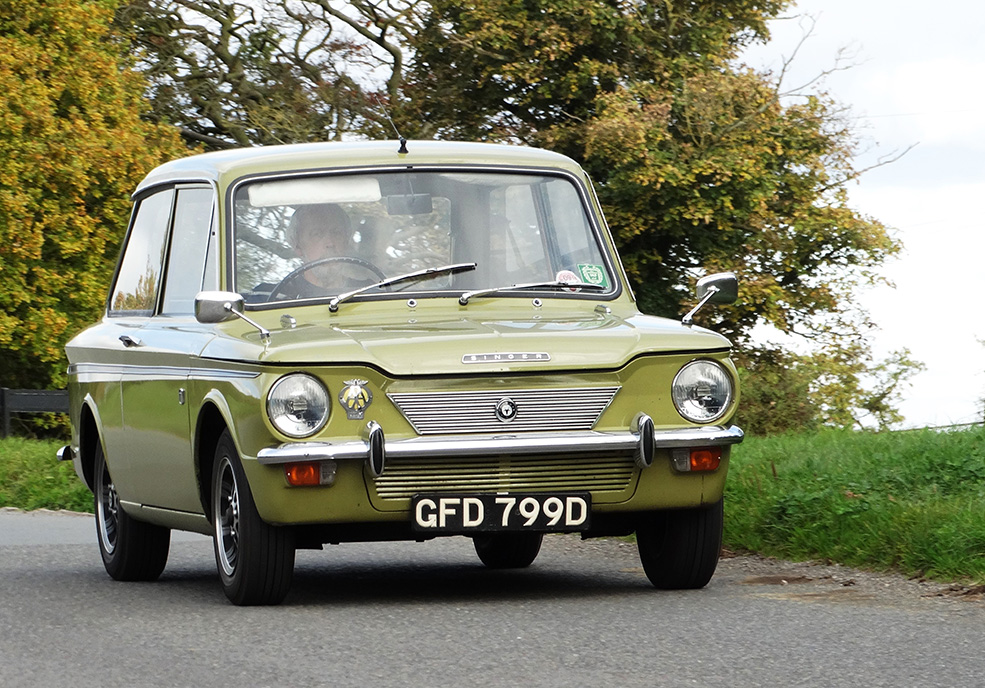
HILLMAN IMP
Rootes Group’s crucial new rival to the BMC Mini couldn’t have been more different in concept when it appeared in 1963, with the rear-engined layout of the neat but boxy looking Hillman Imp coming as a surprise to many. The engine itself was a joy, however: an all-alloy 875cc unit developing 37bhp in standard form and up to 51bhp in subsequent twin-carb guises, linked to a pretty slick four-speed manual ’box.
This was an engine with real performance potential, and Britain’s amateur race and rally fans soon got to hear how easily it could be tuned and uprated, giving the Imp quite a reputation in competitive circles.
Just like BMC, Rootes wasn’t afraid to exploit badge engineering at the time, which is why Hillman, Singer and Sunbeam versions of the Imp saloon were produced over the years, along with coupe, estate and van models. Most desirable are arguably the Sunbeam Imp Sport and Sunbeam Stiletto, the latter combining the coupe’s fastback styling with the Sport’s twin-carb motor; and with just 10,000 made of each, these are also among the rarest versions on today’s scene.
Imp reliability and build quality went through various ups and downs during the model’s thirteen years in production, but these were generally pretty well sorted in the end. Keep any Imp engine well maintained and regularly serviced and you should have few problems these days. All you have to do is find an excellent, well maintained car (from around £4000 upwards) to enjoy your urban Imp motoring.
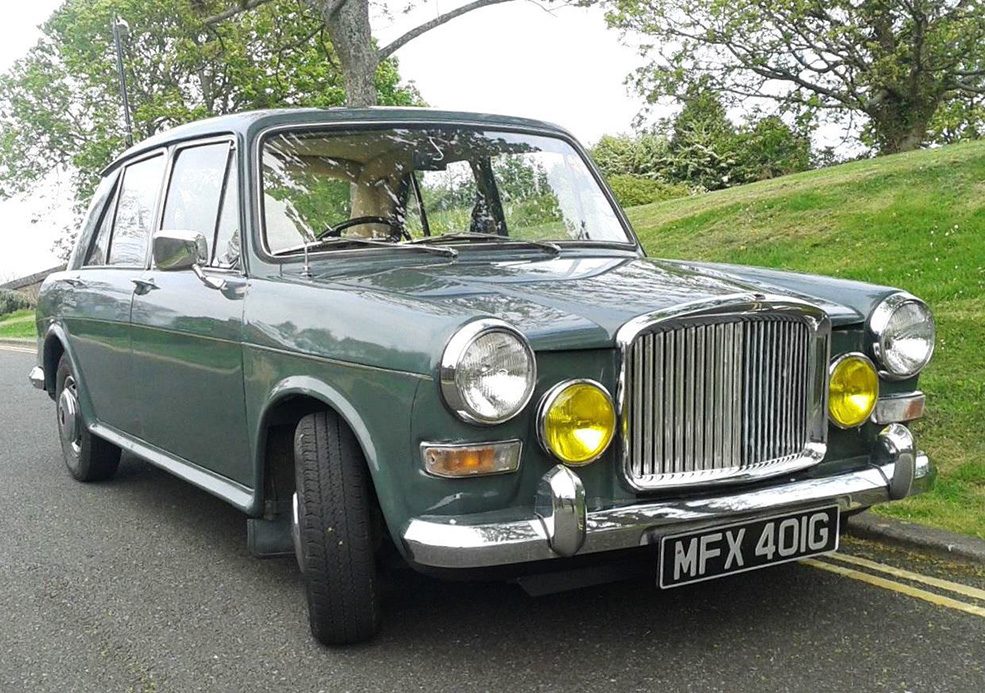
BMC 1100 / 1300
With prices of classic Minis having soared in recent years, its larger sibling – BMC’s 1100/1300 range, codenamed ADO16 – suddenly looks great value for money. This is still a compact car, of course, making it ideal for city motoring today; but with asking prices (particularly of the Austin and Morris versions) being generally lower than the equivalent Mini’s, the 1100/1300 is a temping proposition.
The inaugural Morris 1100 of 1962 was soon joined by an MG derivative, with the following year seeing the arrival of the inevitable Austin version. Riley, Wolseley and highly luxurious Vanden Plas derivatives eventually completed the six-marque range, with the various two- and four-door saloons finally being joined by a three-door estate (available in either Austin or Morris guise) in 1966. More powerful (1275cc) versions of ADO16 were launched in 1967 to complement the smaller-engined offerings.
The 1100/1300 line-up followed a similar style to the Mini by employing front-wheel drive, a transversely mounted engine and Hydrolastic suspension, while super-sharp rack and pinion steering and front disc brakes gave it a technical advantage over many rivals. The good news for BMC (and subsequently British Leyland) was that ADO16 proved to be a huge success, becoming Britain’s best-selling car throughout most of the ’60s; well over two million had been built by the time its replacement (the Austin Allegro) arrived in 1973. Nowadays you can pay £8000 or more for an immaculate Vanden Plas, but less than half as much should get you a very smart Austin or Morris model.
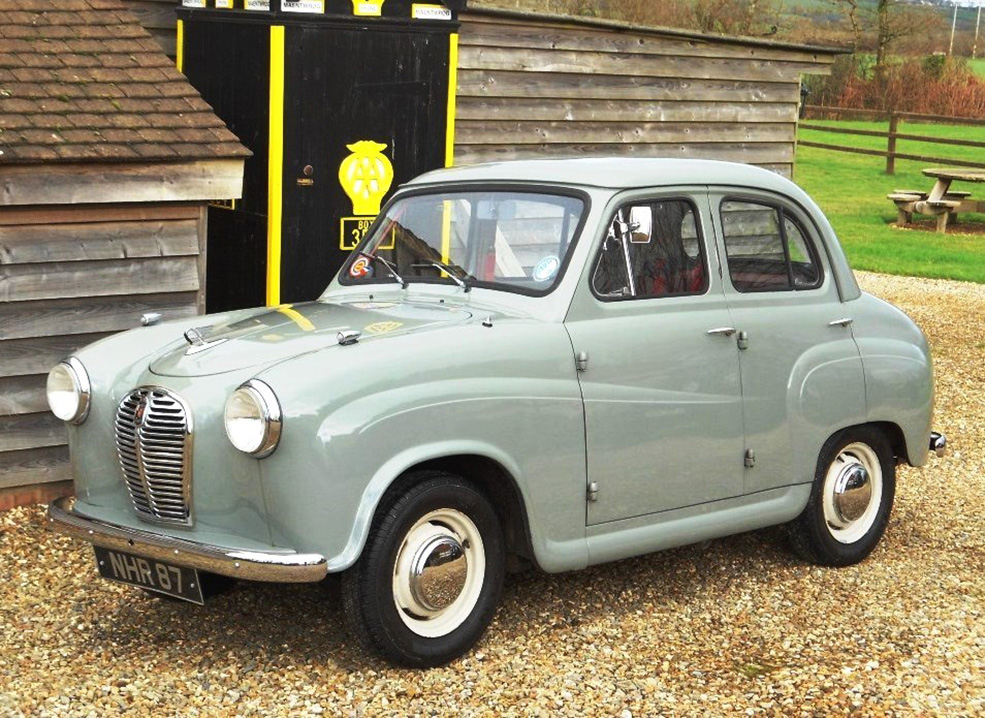
AUSTIN A30 / A35
Fancy a slice of ’50s-style nostalgia for your 21st century city needs? Then you’ll struggle to beat the cute and characterful Austin A30 or its more powerful successor, the Austin A35 – the first cars to use Longbridge’s new A-series engine. With 803cc power, the 1951-56 A30 offered a top speed of 63mph, impressive fuel economy and enough space on board for a family of four. Launched as a four-door saloon, the standard A30 was soon followed by two-door, estate and van versions.
The 1956-59 A35 received the same 948cc A-series lump that ended up being fitted in the Morris Minor 1000, pushing the Austin’s top speed up to 72mph. Wheel size was reduced to 13 inches, overall gearing was raised and the previous tiny back window gave way to full-width glass. The A35 saloon finally disappeared in 1959, although the estate and van versions lasted until 1962 and ’68 respectively.
As a driver’s car, the A35 has the edge over the A30 thanks to its extra power (34bhp versus 30bhp), while reverse parking is made easier thanks to the A35’s much larger rear screen. Due to their ultra-narrow bodywork and lack of length, however, either model makes real sense in a modern urban environment; its steering might not be as sharp as a Minor’s rack and pinion set-up, but an A30 or A35 can squeeze through gaps that most rivals can’t manage. These Austin tiddlers even manage to offer decent value, with just £3000 to £5000 buying a saloon in good to excellent condition.
OR ALTERNATIVELY, HOW ABOUT A…

MINI CLUBMAN
The Mini had been around for a whole decade by the time the new Clubman saloon and estate arrived in 1969, taking the miniature marvel further upmarket than originally intended. Fresh front end styling came from ex-Ford man Roy Haynes, successfully giving the Clubman a more modern look. Power initially came from the 998cc A-series engine, subsequently replaced by the 1098cc version. Not every Clubman is tax exempt (the last saloons were sold in 1980) but many are – and at around £5000 for a tidy example, they offer reasonable value.
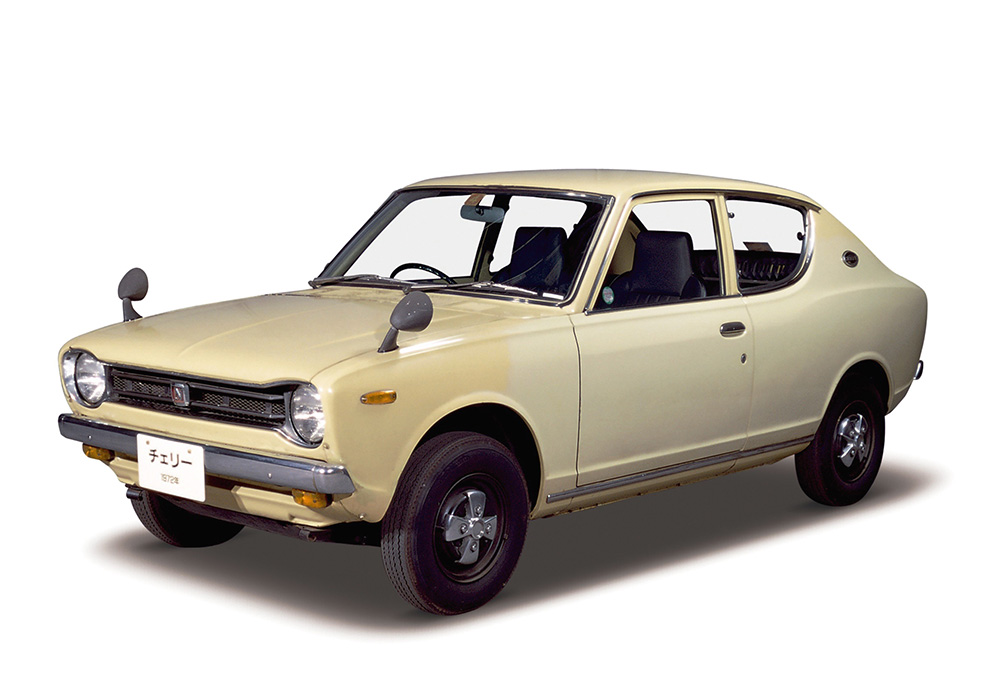
DATSUN CHERRY 100A
One of the earliest Japanese cars to sell well in the UK was the original Datsun Cherry, known as the 100A series and launched here in 1971. It remained a popular choice throughout its six-year career, and was once a common sight on Britain’s roads. Buyers were attracted by the Cherry’s keen pricing, generous equipment levels and class-leading reliability, although the car’s tendency to rust means there are relatively few survivors now. Values of the best are rising (£4000-5000 isn’t unusual) thanks to the popularity of Japanese classics right now.
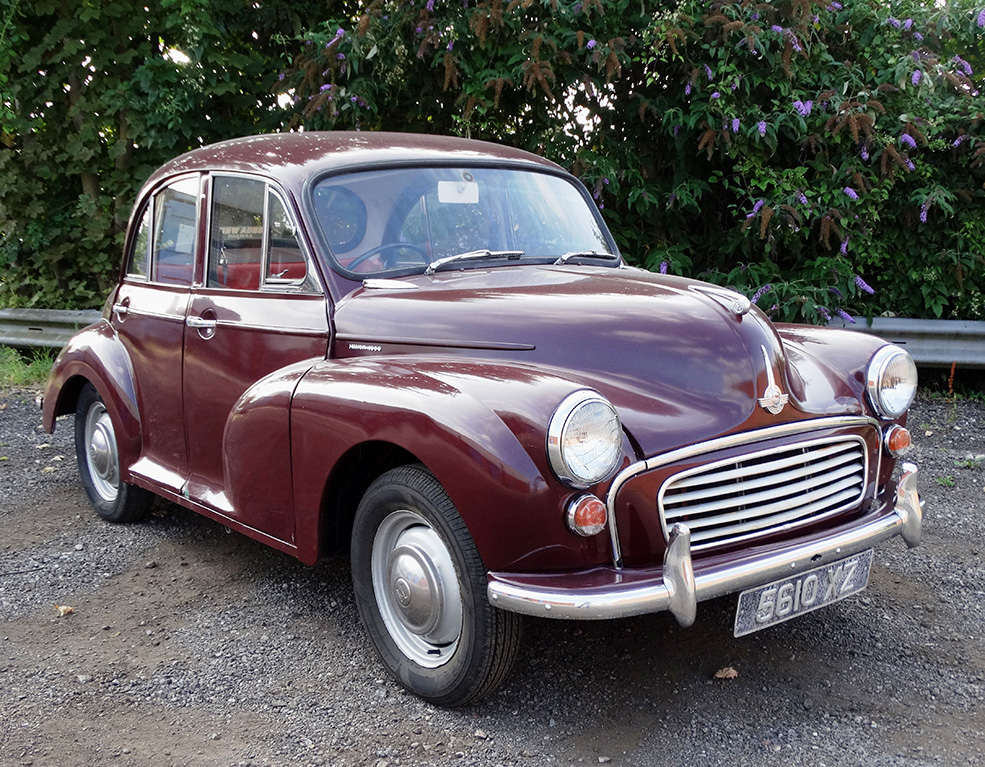
MORRIS MINOR 1000
With surprisingly precise rack and pinion steering, a sharp gearchange and decent round-town performance (in both 948cc and 1098cc guises), a later-model Minor makes a great tax-free city car. This Morris handles well too, which means you can throw your Minor into any urban situation and be confident it will hold its own. With presentable, MoT’d Minors available from £2500-3000 (and very smart cars priced at roughly 50 per cent more), a well-preserved saloon makes a cost-effective entry into classic urban motoring – and is small enough to park easily.
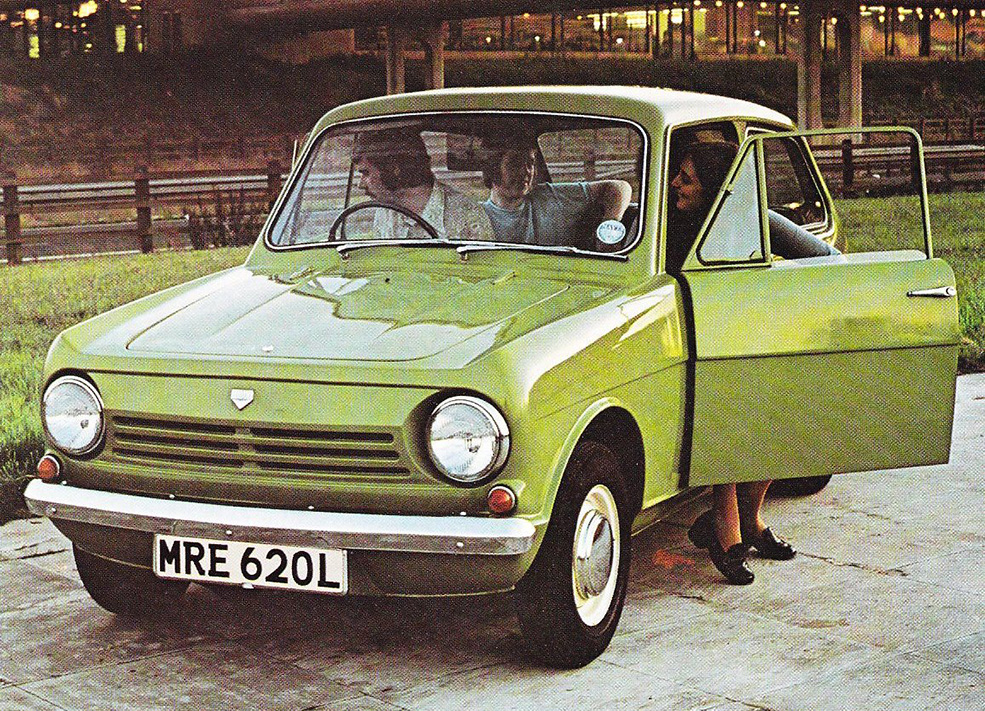
RELIANT REBEL
Looking for a city car that’s just a bit different from the norm? Then the Rebel – Reliant’s four-wheeled offering of 1964-74 – might fit the bill. The final versions ended up with 748cc power (up from 700cc), and Rebel buyers had a choice of saloon, estate or van bodywork. These ultra-economical runabouts are fun to drive, but also very practical – with non-rusting glassfibre bodywork and low running costs. With just 2600 cars built, however, finding the ideal Rebel isn’t always easy. Projects start from £500, with near-immaculate cars costing £3000 up.

